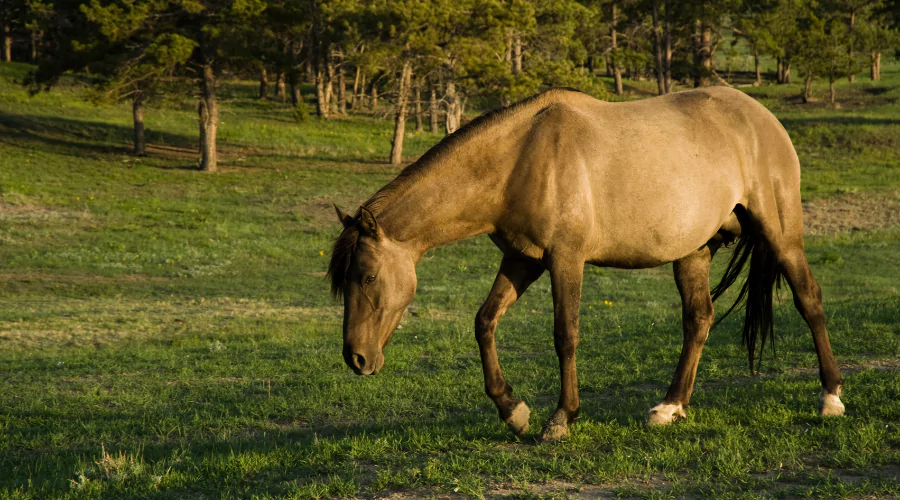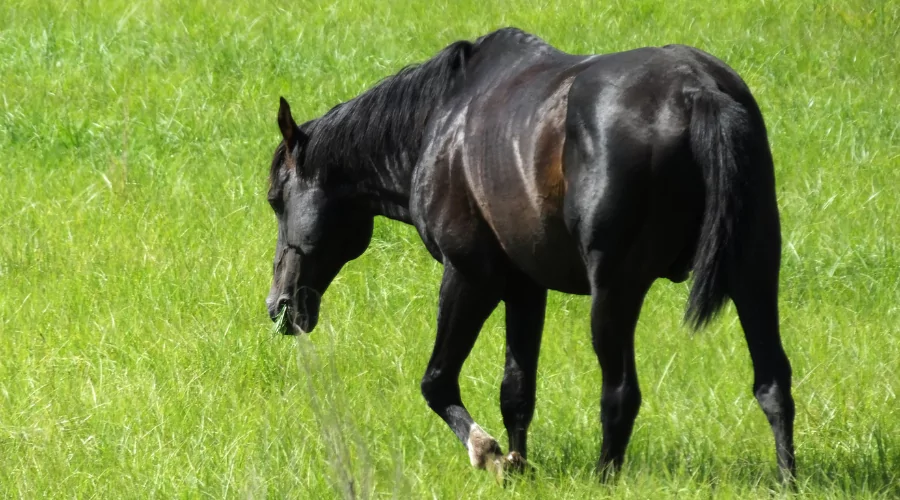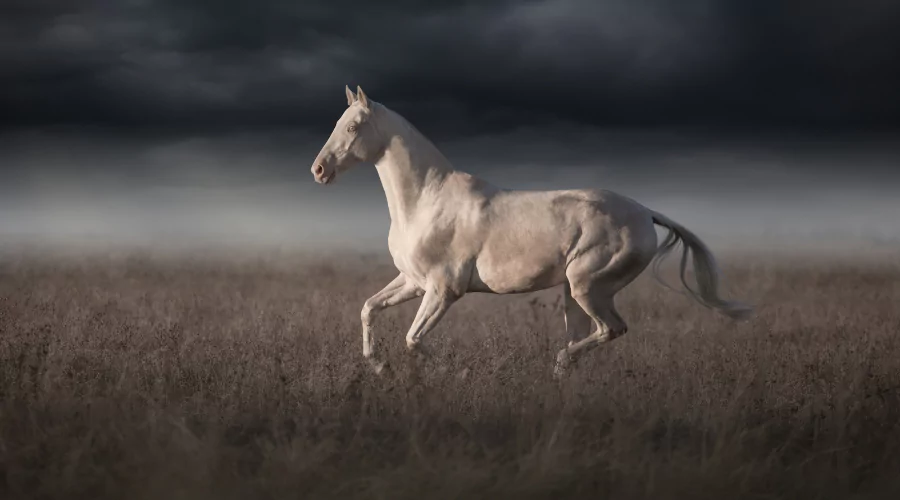The Rare Horse Breeds in the World
With hundreds of breeds, each with its own history, personality quirks, and physical attributes, the equine world is as diverse as it is large. Equestrians and horse lovers all across the globe have a soft spot for uncommon horse breeds.
These breeds provide light on the complex web of human-equine relationships over the ages thanks to their fascinating histories, stunning appearances, and even cryptic origins. The purpose of this article is to delve into the interesting world of unusual horse breeds by discussing their background, where they came from, and the unique qualities that set them apart from other horses.
What Makes a Horse Breed Rare?
Factors like as population size, regional dispersion, and genetic variety contribute to the rarity of horse breeds. Natural catastrophes or human interference may have driven certain breeds to the brink of extinction, while others may have lower numbers owing to particular breeding needs or geographical isolation.
Popularity and demand in the equine market may also play a role in determining the rarity of a breed. Because of their rarity and exceptional quality, uncommon horse breeds command a premium price.
The History of Rare Horse Breeds
Some rarest horse breeds have been around for thousands of years, long before humans emerged as a cultural phenomenon. These breeds were deliberately cultivated and chosen over generations to create specific physical traits useful for particular jobs, such as transportation, farming, or fighting. Rare horse breeds have also played key roles in human history and culture, making them essential cultural icons even now.
Understanding Rare Horse Breeds
Rare horse breeds are ones that have limited populations owing either to their specialized breeding needs, historical events that have diminished their numbers, or simply because they have been eclipsed by more popular types. The category of the “rarest horse breed” is fluid, since conservation initiatives and breeding plans may assist to recover the fortunes of certain breeds.
Characteristics like the “rarest color horse” or the label of the “prettiest horse in the world” lend levels of intrigue and mysticism to these equine oddities, capturing the imaginations of people throughout the globe.
The Beauty of Rare Horse Breeds
One of the most noticeable qualities of rare horse breeds is their stunning beauty. These breeds frequently contain distinctive physical traits that distinguish them apart from other more popular horse breeds. From the brilliantly patterned Appaloosa to the curly-coated Bashkir Curly, rare horse breeds come in a range of colors, patterns, and sizes. Their beauty is further accentuated by their rarity, making them all the more attractive for equestrian fans.
The Fascinating Characteristics of Rare Horse Breeds
Aside from their outward appearance, strange horse breeds also feature distinctive qualities and behaviors that make them stand out in the equine world. Some are noted for their intellect, endurance, or agility, while others have particular adaptations that enable them to live in difficult settings. These breeds generally have rich histories and cultural importance that adds to their attractiveness.
The Importance of Preserving Rare Horse Breeds
With the progress of modern technology and the growth of industrialized agriculture, many uncommon horse breeds fear extinction owing to diminished demand and restricted breeding chances. The extinction of these distinct horse breeds not only entails a decline in genetic variety but also the erasure of centuries-old human-equine relationships and cultural traditions. As such, conserving rare horse breeds is vital for sustaining biodiversity and remembering our shared past with these lovely creatures.
Some Rare Horse Breeds on Our List

Akhal Teke: The Golden-Horse
Originating from Turkmenistan, the Akhal-Teke is commonly included while debating the prettiest horse in the world. Known for its speed, stamina, and characteristic metallic shine, the Akhal-Teke’s coat comes in numerous hues, including the rare and highly sought golden buckskin or palomino. This breed’s history is buried in folklore and tradition, with tales of its pedigree extending back thousands of years, making it one of the most ancient and rarest horse breeds in existence.

The Suffolk Punch
The Suffolk Punch, a unique horse breed from England, is recognized for its power, durability, and docility. This breed is defined by its chestnut hue, which varies from brilliant chestnut to dark liver, with no white markings. It’s one of the earliest draft horse breeds, established in the early 16th century for agricultural labor. Despite its tremendous work ethic and kind disposition, the Suffolk Punch is considered rare, with attempts ongoing to conserve this historically valuable breed.

Przewalski’s Horse: The Last Wild Horse
Przewalski’s Horse, commonly known as the Mongolian Wild Horse or Takhi, is rare among horse breeds since it is regarded the only real wild horse species remaining in the world today. Unlike other horse species that have been domesticated, the Przewalski’s Horse has never been tamed for riding or labor. This horse breed is distinguished by a stocky body, a dun coat with black mane and tail, and a characteristic dorsal stripe.
With fewer than 2,000 individuals remaining in the wild and in captivity, significant attempts are being undertaken to reproduce and return them into their original environment in Mongolia. Their incredible survival story and their usefulness for genetic studies make Przewalski’s Horse a vital tool in studying the development and domestication of horses.

Caspian
This old species was assumed to be extinct until its rediscovery in 1965. Known for their diminutive size, endurance, and intelligence, Caspian horses are currently being produced in limited numbers to conserve this unique breed. Persian horses boast a unique combination of elegance and strength, attributes that belie their petite stature.
Standing at an average of 9 to 11.2 hands high, these horses are marked by their thin physique, exquisite head, and wide, expressive eyes that represent their energetic disposition. Despite their diminutive height, Caspians demonstrate the power and stamina of much bigger horse breeds, making them very adaptable. Historically, they were utilized for drawing royal chariots and as children’s rides, exhibiting their mild nature and quickness.
Today, attempts to conserve the Caspian concentrate on its historical value and genetic distinctiveness, with breeding programs intended at conserving their ancient ancestry while increasing their adaptability in contemporary equestrian sports and activities.

The Marwari
This rare Indian horse breed is instantly identified by its inward-turning ears. They have a long history, with legend citing their usage in ancient conflicts and as the chosen ride of Rajput warriors. The Marwari breed, with its characteristic inward-curving ears, is a significant icon of Rajasthani tradition and history. These horses are famed not just for their unusual look but also for their loyalty and courage, attributes that made them important to their riders in ancient wars.
Marwari horses possess a tough constitution that enables them to flourish in the harsh conditions of the desert, a tribute to their flexibility and perseverance. Over the years, the Marwari has grown linked with the royal heritage of India, typically included in traditional rites and festivals that commemorate the rich cultural fabric of the country.
Despite its historical value, the Marwari breed confronts issues relating to diminishing numbers and genetic variety, demanding active conservation measures to guarantee they continue to beautify the landscapes of India for centuries to come.

Sorraia
This Portuguese breed is distinguished for its dun color, toughness, and agility. They were virtually extinct in the 1930s until a breeding effort helped to increase their numbers. The Sorraia horse, with its untamed beauty and distinctive dun coat, is a living remnant of ancient equine history. These horses are notably notable for their primitive markings, which include a dorsal stripe, shoulder stripes, and zebra-like leg barring, traits that reflect the look of archaic horse forebears.
The Sorraia’s tiny and sturdy construction allows it to live in difficult situations, displaying an amazing degree of hardiness and flexibility. Originating from the Iberian Peninsula, this breed has played a vital part in the evolution of other Iberian horse breeds, notably the legendary Andalusian and Lusitano. Despite their historical importance and contributions to equine genetic diversity, Sorraia horses remain one of the rarest horse breeds in the world.
Conservation efforts are important to conserve this rare species, with continuous projects focusing on keeping pure bloodlines and raising public awareness of their situation. Through these efforts, the Sorraia not only serves as a connection to our equestrian history but also gives hope for the preservation of uncommon breeds in the future.

Florida Cracker
This rare American horse breed was almost extinct until a herd of wild horses with identical features was found in Florida. They are presently being bred to maintain their distinct qualities and heritage. The Florida Cracker, called after the “cracking” whips of cattle herders in ancient Florida, is characterized not simply by its toughness and endurance, but also by its crucial role in the early American frontier.
These horses are recognized for their agility, intelligence, and the capacity to work under hard circumstances, featured heavily in the cattle herding and agricultural growth of the southern United States. With a petite build, the Florida Cracker features a vibrant but controlled disposition, making it an ideal horse breed for a range of activities beyond its original pastoral responsibilities.
Despite its significant part in American history, the Florida Cracker horse suffered diminishing numbers owing to contemporary innovations and changes in agricultural techniques. Fortunately, concerted breeding initiatives and the acknowledgment of its historical and cultural value have inspired a fresh interest in maintaining this unique species. Efforts to record and protect the pure ancestry of the Florida Cracker horse are continuing, reflecting a dedication to conserving an important component of America’s equestrian history.
Final Thoughts
Rare horse breeds give a look into the complex fabric of human-equine relationships, highlighting the persistence and flexibility of these amazing beasts. Through conservation initiatives and breeding programs, we can guarantee that these unique horse breeds continue to flourish and inspire future generations with their beauty, history, and cultural importance.
So let’s appreciate and enjoy the marvel of rare horse breeds, because they are certainly a gift worth conserving. Although it is hard to predict what the future holds for these unique horse breeds, continuing efforts to maintain their genetic variety and cultural value will guarantee that they remain a source of interest and amazement for decades to come.
FAQs on Rare Horse Breeds
What is the most rare horse breed?
The most rare horse breed is often considered to be the Sorraia. Native to the Iberian Peninsula, particularly in parts of Portugal, the Sorraia is critically endangered with efforts ongoing to preserve its lineage.
Why are Akhal Tekes so rare?
Akhal Tekes are rare due to their unique genetic lineage and selective breeding history. Originating from Turkmenistan, they are bred for their speed, endurance, and the distinctive metallic sheen of their coat, making them highly sought after but scarce outside their native region.
What is a rare expensive horse?
The Thoroughbred racehorse stands out as a rare and expensive horse, particularly those with pedigree lineage or exceptional racing records. Prices can soar into the millions for elite performers or breeding prospects.
What is the rarest color horse?
One of the rarest horse colors is the true white. Unlike grays or creams, true white horses are born white and stay white with pink skin and blue or dark eyes. This coloration is extremely rare due to the genetics required to produce it.
What is the number 1 horse breed in the world?
The Arabian horse is often cited as the number 1 horse breed in the world due to its ancient lineage, beauty, versatility, and influence on other horse breeds. Its endurance, intelligence, and characteristic appearance make it highly revered globally.
What are the rarest horse names?
Rare horse names often draw from mythology, exotic languages, or unique personal stories. Names like Epona (Celtic goddess of horses), Zephyr (the Greek god of the west wind), and Kelpie (a mythical water horse from Scottish folklore) are examples of unique and rare horse names.
You May Also Like:
The Majestic Equines of India: A Journey Through Indian Horse Breeds
Spotted Horse Breeds: History, Origin, and Types
8 Beautiful White Horse Breeds
German Horse Breeds: A Quest for Elegance and Power
5 Small Horse Breeds: Little Horses, Big Charm
